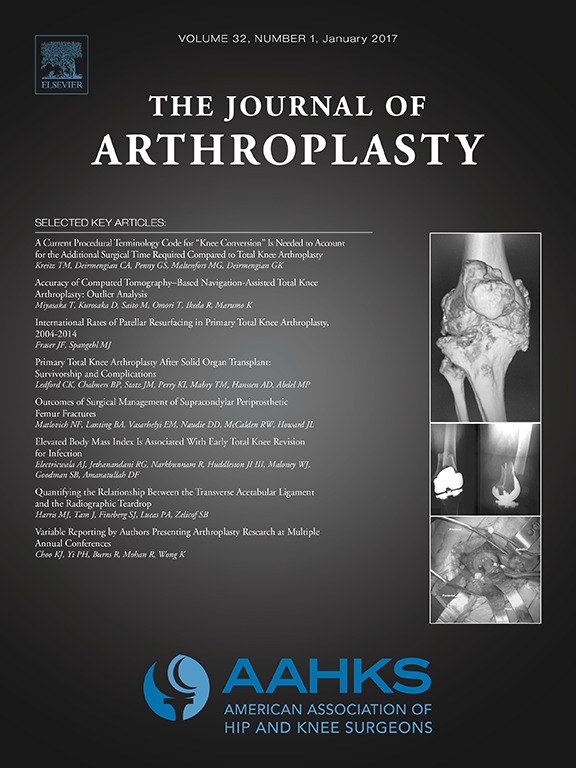
No clear benefit of liposomal bupivacaine over plain bupivacaine for periarticular injection in TKA .
Liposomal Bupivacaine vs Plain Bupivacaine in Periarticular Injection for Control of Pain and Early Motion in Total Knee Arthroplasty: A Randomized, Prospective Study
J Arthroplasty. 2018 Aug;33(8):2460-2464 doi: 10.1016/j.arth.2018.03.01480 patients scheduled for total knee arthroplasty were randomized to periarticular infiltration analgesia completed using either liposomal bupivacaine or plain bupivacaine. Outcomes of interest included pain scores during physical therapy, narcotic consumption, and knee range of motion. Assessment timepoints included 24 hours, 48 hours, 72 hours, and at discharge. While pain scores during physical therapy were significantly lower in the liposomal bupivacaine group at 24 hours after surgery, the differences between groups at 48 hours after surgery and all other outcome measures were not statistically significant.
Unlock the Full ACE Report
You have access to 4 more FREE articles this month.
Click below to unlock and view this ACE Reports
Unlock Now
Critical appraisals of the latest, high-impact randomized controlled trials and systematic reviews in orthopaedics
Access to OrthoEvidence podcast content, including collaborations with the Journal of Bone and Joint Surgery, interviews with internationally recognized surgeons, and roundtable discussions on orthopaedic news and topics
Subscription to The Pulse, a twice-weekly evidence-based newsletter designed to help you make better clinical decisions
Exclusive access to original content articles, including in-house systematic reviews, and articles on health research methods and hot orthopaedic topics
































































